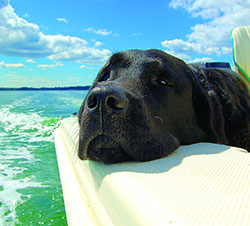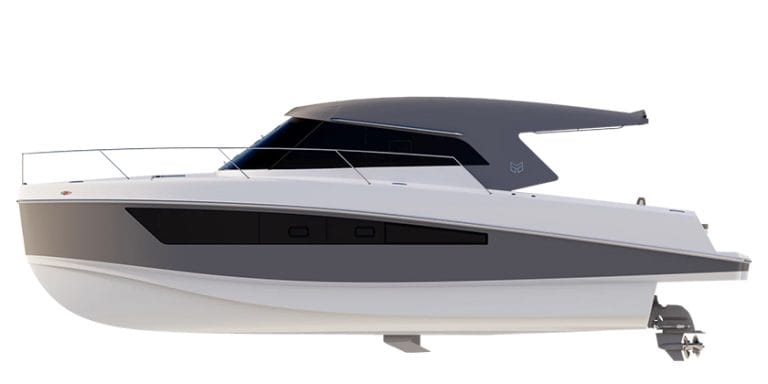The Boating Dog’s Days of Summer

Some dogs were born for the water, others less so. The key to boating with dogsis taking it slow and making safety #1. Here are eight tips that you can share with your dog-owning friends this summer:
Before you go:
Get a good fitting life jacket and have the dog wear it a few times around the home before they get on a boat. Any pet life jacket should have a handle to easily lift the animal out of the water. Here’s a buying guide for dogs of all sizes: www.BoatUS.com/doglifejacket.
Have a special ID tag with the name of the boat, marina, slip number and cellphone number on it just in case. If the dog gets lost, it’s a lot easier for the person who finds them to get them back to you quickly.
If there is any chance you’ll be travelling outside of Canada, make sure you have current rabies vaccine and other shot documentation with you as dog tags are not acceptable proof of immunizations. It is also a good idea to check with customs because the rules and requirements often change.
Getting started:
Familiarize the dog with the boat slowly – don’t just get on the boat and leave the dock right away. Ideally, bring the dog to the boat for the first time without leaving the dock, and let give them a chance to sniff around and get their sea legs. It may help to start the engine so they are used the sound.
Plan for falls overboard, either from the boat or dock. If the dog falls overboard underway – or jumps in – you may be able to circle back and retrieve Fido just like a fallen water skiier, pulling up slowly, cutting the engine and luring the dog to the swim platform with a treat. If you don’t have a swim platform, smaller dogs may be lifted over the side by their life jacket handle, but bigger dogs may require a different solution. If a dog falls off a dock, know that seawall bulkheads may prevent the animal from a self-rescue.
Bring plenty of water and make sure there’s some place the dog can get out of the sun and stay as cool as possible. Know the symptoms of dog heat stroke. While seasick dogs may vomit, that’s also one sign of heat stroke. Rapid, loud or difficulty breathing, extreme thirst, thick saliva, disorientation and a bright red tongue and pale gums are a few of the others.
If you’re going to be out on the boat for more than a few hours, plan on how your dog will relieve themselves, and pick up after your dog, no matter where they go. If you see where someone else didn’t pick up after their dog, pick it up for them. You don’t want to give any opportunity to show why dogs shouldn’t be allowed in your marina, and your boating friends will love you for it.
Does your boat’s insurance policy cover pets?
Photo Caption: How can you resist? However, before you bring the dog on the boat, read these smart tips (credit: Jan Burgess)
Article courtesy BoatUS





























